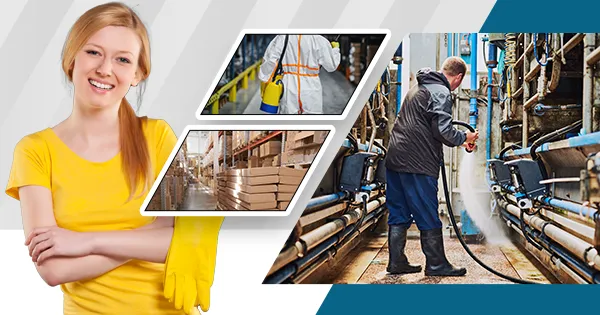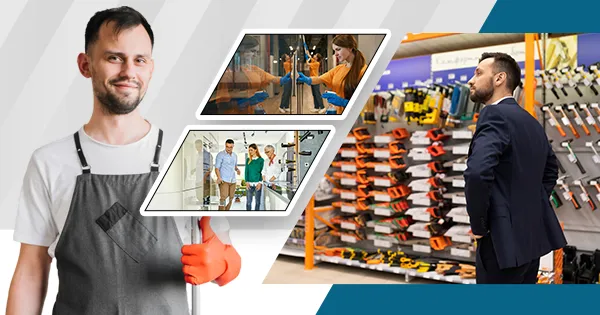Maintaining a clean and sanitised kitchen environment is crucial for the success of any restaurant. Not only does it impact customer satisfaction, but it also plays a significant role in ensuring the health and safety of both customers and employees. Cleanliness is not just about aesthetics; it is about creating a safe and hygienic environment where food can be prepared and served without the risk of contamination. When customers walk into a restaurant, they expect to be greeted with a clean and inviting atmosphere. The cleanliness of the cooking equipment, such as stoves, ovens, grills, and fryers, reflects the overall cleanliness of the establishment. If the equipment is dirty or greasy, it can give the impression that the kitchen is not well-maintained, which can negatively impact customer satisfaction.
In addition to customer satisfaction, maintaining a clean and sanitised kitchen environment is essential for health reasons. Bacteria, mould, and other pathogens can easily grow on dirty surfaces and contaminate food. This can lead to foodborne illnesses and outbreaks, which can have severe consequences for both customers and the reputation of the restaurant.
Establishing a Cleaning Schedule: Tips for Keeping Your Kitchen Equipment Spotless
One of the most effective ways to ensure that your cooking equipment remains clean and sanitised is by establishing a cleaning schedule. A cleaning schedule helps to create a routine and ensures that all necessary cleaning tasks are completed regularly.
When creating a cleaning schedule for your restaurant, it is important to consider the specific needs of your kitchen equipment. Some equipment may require daily cleaning, while others may only need to be cleaned once a week. Consider factors such as usage frequency, type of food being prepared, and manufacturer recommendations.
Assigning cleaning tasks to specific employees is also crucial for maintaining a clean kitchen environment. Each employee should have clear responsibilities and be held accountable for their assigned tasks. This helps to ensure that all cleaning tasks are completed consistently and thoroughly.
The Right Tools for the Job: Choosing the Best Cleaning Products for Your Cooking Equipment
Using the right cleaning products is essential for effectively cleaning and sanitising your cooking equipment. Different types of equipment may require different cleaning products, so it is important to choose products that are specifically designed for the surfaces you are cleaning.
When choosing cleaning products, consider factors such as effectiveness, safety, and environmental impact. Look for products that are approved by regulatory agencies and have been tested for their efficacy in killing bacteria and other pathogens. It is also important to choose products that are safe to use and do not pose a risk to employees or customers.
In recent years, there has been a growing trend towards using eco-friendly cleaning products. These products are made from natural ingredients and do not contain harsh chemicals that can be harmful to the environment or human health. Using eco-friendly cleaning products not only helps to reduce your restaurant’s environmental footprint but also provides a safer and healthier working environment for your employees.
Cleaning Techniques: Expert Advice for Sanitising Your Cooking Surfaces and Appliances
Proper cleaning techniques are essential for effectively sanitising your cooking surfaces and appliances. It is not enough to simply wipe down surfaces; thorough cleaning requires attention to detail and the use of proper techniques.
One important aspect of proper cleaning techniques is using the right amount of cleaning solution. Using too little may not effectively remove dirt and bacteria, while using too much can leave behind residue that can be harmful if ingested. Follow the manufacturer’s instructions for diluting cleaning solutions and use them in the recommended amounts.
Another important aspect of proper cleaning techniques is using the right tools. Different surfaces may require different tools, such as scrub brushes, sponges, or microfiber cloths. Using the right tools can help to remove dirt and grime more effectively and prevent damage to surfaces.
When cleaning cooking surfaces and appliances, pay special attention to hard-to-reach areas. These areas, such as crevices, corners, and hinges, can easily accumulate dirt and bacteria if not cleaned properly. Use small brushes or toothbrushes to reach these areas and ensure that they are thoroughly cleaned.
Proper Storage: Tips for Keeping Your Cooking Equipment Clean and Organised
Proper storage is essential for keeping your cooking equipment clean and organised. When equipment is not in use, it should be stored in a designated area that is clean and free from contaminants. One important aspect of proper storage is ensuring that equipment is completely dry before storing it. Moisture can promote the growth of bacteria and mould, so it is important to allow equipment to air dry before putting it away. If necessary, use clean towels or cloths to dry equipment thoroughly.
Another important aspect of proper storage is organising equipment in a way that prevents cross-contamination. Store equipment in separate areas based on their use, such as separating raw food preparation equipment from cooked food preparation equipment. This helps to prevent the transfer of bacteria and other contaminants between different types of food.
Having a designated storage area for your cooking equipment also helps to keep your kitchen organised and efficient. When equipment is stored in a specific location, it is easier for employees to find what they need quickly, reducing the risk of cross-contamination and improving workflow.
Role of Staff Training: Ensuring that Your Employees Understand the Importance of Cleanliness
Staff training plays a crucial role in ensuring that your employees understand the importance of cleanliness and are equipped with the knowledge and skills to maintain a clean kitchen environment. When training your employees on proper cleaning techniques, it is important to provide clear instructions and demonstrate the correct procedures. Allow employees to practice techniques under supervision to ensure that they are performing them correctly.
In addition to teaching proper cleaning techniques, it is also important to educate your employees on the importance of cleanliness and the potential consequences of poor hygiene. Help them understand how their actions can impact the health and safety of both customers and them.
Regular refresher training sessions are also important to ensure that employees continue to follow proper cleaning procedures. As new employees join your team, make sure they receive thorough training on cleaning protocols and expectations.
Benefits of Regular Maintenance: How Proper Care Can Extend the Life of Your Cooking Equipment?
Regular maintenance is essential for extending the life of your cooking equipment and ensuring that it continues to function properly. Proper care and maintenance can help to prevent breakdowns, reduce repair costs, and improve the efficiency of your equipment. One important aspect of regular maintenance is cleaning and inspecting equipment regularly. Regular cleaning helps to remove dirt and grime that can accumulate over time and affect the performance of your equipment. Inspecting equipment allows you to identify any potential issues or signs of wear and tear before they become major problems.
In addition to regular cleaning and inspection, it is also important to follow manufacturer recommendations for maintenance tasks such as lubrication, filter replacement, and calibration. These tasks are designed to keep your equipment running smoothly and prevent unnecessary wear and tear.
Regular maintenance not only extends the life of your cooking equipment but also helps to maintain its performance. Well-maintained equipment operates more efficiently, which can result in energy savings and lower utility costs for your restaurant.
Health and Safety Considerations: Why Cleanliness is Crucial to Your Restaurant’s Success?
Cleanliness is crucial for the health and safety of both customers and employees. Failure to maintain a clean and sanitised kitchen environment can lead to foodborne illnesses, outbreaks, and other health hazards. Bacteria, mould, and other pathogens can easily grow on dirty surfaces and contaminate food. When customers consume contaminated food, they can become ill with symptoms such as nausea, vomiting, diarrhoea, and fever. In severe cases, foodborne illnesses can lead to hospitalisation and even death.
In addition to the health risks, failure to maintain a clean kitchen environment can also result in legal consequences. Restaurants are subject to health and safety regulations that require them to maintain a certain level of cleanliness and hygiene. Failure to comply with these regulations can result in fines, closure of the establishment, and damage to the restaurant’s reputation.
Maintaining a clean and sanitised kitchen environment is not just about meeting legal requirements; it is about creating a safe and healthy environment for both customers and employees. A clean kitchen environment promotes good hygiene practices and reduces the risk of contamination, ensuring that everyone who enters your restaurant remains safe and healthy.
Troubleshooting: Common Cleaning Challenges and How to Overcome Them?
Despite your best efforts, you may encounter some common cleaning challenges in your restaurant. Knowing how to overcome these challenges promptly is essential for maintaining a clean and sanitised kitchen environment. One common cleaning challenge is dealing with stubborn stains and grease buildup. These can be difficult to remove with regular cleaning products. In such cases, it may be necessary to use specialised cleaning products or techniques. For example, using a degreaser or a steam cleaner can help to break down grease and make it easier to remove.
Another common cleaning challenge is addressing hard-to-reach areas. These areas, such as vents, grates, and filters, can accumulate dirt and grime over time. To clean these areas effectively, use small brushes or toothbrushes to reach into crevices and corners. If necessary, remove the equipment or disassemble it to access hard-to-reach areas.
It is important to address cleaning challenges promptly to prevent them from becoming bigger problems. Regularly inspect your equipment for signs of dirt or damage and address any issues as soon as they arise. This will help ensure that your kitchen remains clean and always sanitised.
Putting it All Together for a Clean and Sanitised Kitchen Environment
Maintaining a clean and sanitised kitchen environment is crucial for the success of your restaurant. It impacts customer satisfaction, health, and safety, and compliance with regulations. By establishing a cleaning schedule, choosing the right cleaning products, using proper cleaning techniques, organising equipment storage, training your staff, performing regular maintenance, and addressing cleaning challenges promptly, you can create a clean and sanitised kitchen environment that promotes good hygiene practices and ensures the health and safety of everyone who enters your restaurant.







